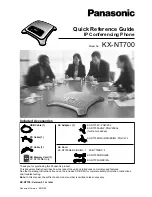
MITSUBISHI ELECTRONICS AMERICA, INC.
ST200 Series Technical Support Manual
25
January 2000
use standard AT commands, which common PC software applications normally embed within
their modem script. The MT Owner’s Manual and Appendix D provide information beyond the
description in this section.
When an MT receives a data call, it produces a shorter ring with longer pauses and displays
SatData Call
on the handset. When the MT answers a data call, it routes the incoming FES-C
channel to the
DATA
port on the transceiver. The MT user can send a data call directly from the
handset (like a normal voice call) or automatically through the DATA port of the transceiver by
using AT commands from a PC. Users can answer calls one of three ways: 1) pressing a key on
the basic handset, 2) automatically after three rings with auto-answer function enabled, or 3)
automatically after a specific number of rings (greater than 1) specified in the application
software.
Users should execute three key steps prior to data call operations:
1.
Obtain a data telephone number from the dealer or service provider.
2.
Program and commission the MT, if this has not already been done.
Hint: Program the DATA telephone number into an unused memory location for future reference
(e.g. memory location 99).
3.
Connect the data interface (D/I) cable (provided by customer) to the DTE port (TU) and the
COM port (DTE).
The following table lists key data port (TU) characteristics for reference:
Mechanical Interface
DB-25 female
Electrical Interface
RS-232
Communication mode
Full duplex
Synchronization
Start - Stop systems (Asynchronous)
Communication rate
1200bps, 2400bps, 4800 bps
Flow Control
None
Error Correction
Rate 1/2 convolutional coding
Functionality
All “AT” commands listed in the Operating
Instructions
Every MT interfaces with one of the following character formats:
Start Bits
Data Bits
Parity Bits
Stop Bits
1
7
even or odd
1
1
8
none
1
















































